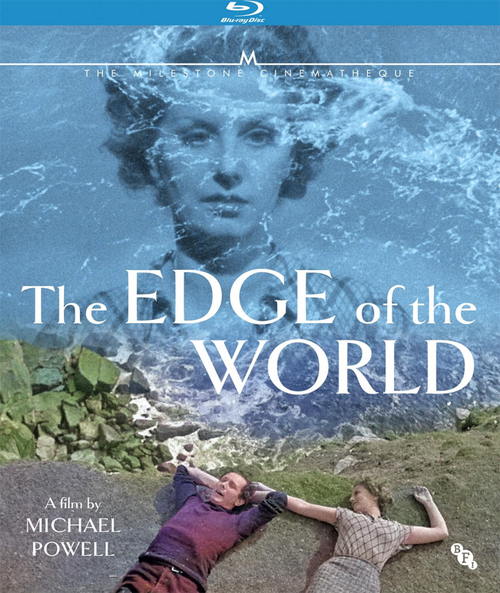
“POWELL’S
BIG BANG”
By
Raymond Benson
The
British production, The Edge of the World, was acclaimed director
Michael Powell’s first important feature film. Released in 1937, it was
well-received in the U.K. and it also made something of a splash in the USA
among the more discerning critics and audiences who appreciated non-Hollywood
fare.
Powell
had been working in cinema in various capacities since the silent days as a
still photographer, scriptwriter, and director of short films. Through most of
the 1930s, he helmed over twenty pictures that had diverse levels of success, but
it wasn’t until 1936-37 that he had the chance to make a truly personal film. This
was the “big bang” breakthrough in his movie career.
The
Edge of the World is
based on a newspaper article Powell had read that documented how a remote
island, St. Kilda in the Scottish Outer Hebrides, was losing its population due
to the land’s inability to support the people, and because younger generations were
fleeing to Scotland and England for better opportunities. Powell wrote an
original script involving two families on such an island and how dramatic circumstances
change their lives.
Unable
to film on St. Kilda, Powell chose the northern island of Foula in the Shetland
Islands group. It was suitably similar in both the landscape and the people’s geo-political
issues. With a handful of known actors and by casting many characters from the
locals, Powell and cinematographers Monty Berman, Skeets Kelly, Ernest Palmer,
and Powell himself, captured (even in black and white) the beauty and awesome
grandeur of the cliffs-dominated island.
Two
dominant families on the fictional island of Hirta, the Mansons and the Grays, are
united by an upcoming marriage between Andrew Gray (Niall MacGinnis) and Ruth
Manson (Belle Chrystall). Ruth’s brother, Robbie (Eric Berry) is Andrew’s best
friend. Conflict arises when Robbie announces that he’s leaving the island to
go “see the world” because there’s nothing left on Hirta for him. Losing
someone like Robbie hurts the economy because there aren’t that many strapping
young men to do the fishing and crofting. Andrew attempts to convince Robbie to
stay, but Robbie will have none of it. Andrew’s father (Finlay Currie) is
somewhat sympathetic to Robbie and believes that the islanders’ way of life is
indeed diminishing and that they should all evacuate for the good of their
children’s children. Robbie’s father (John Laurie) disagrees and is determined
to stay, despite his son’s wishes. Andrew and Robbie challenge each other to an
age-old tradition of racing up one of the cliffs to determine if Robbie should
stay or not. The results of the contest are tragic… and this deeply affects the
futures of the two families and the rest of the story.
Michael
Powell appears at the beginning of the film as a yachtsman escorting Andrew
Gray back to the island for reminiscing (the rest of the movie is a flashback).
Short
and tight (at 75 minutes), The Edge of the World is a slice of life to
which few of us today can relate, but it is a well-made, touching depiction of
the story that Powell wanted to tell. Perhaps more important than the movie
itself is the fact that the picture’s reception enabled Powell to go on to
bigger and better projects, such as Thief of Bagdad (1940) and the
eventual brilliant partnership with co-director Emeric Pressburger.
In
fact, the making of The Edge of the World meant so much to Powell that
he returned to Foula in 1978 with a camera crew and some of the surviving
actors to make a short documentary, Return to the Edge of the World.
This half hour program is in full color and is a warm reunion between the
filmmakers and the people who still reside on the island.
Milestone
Film and Video presents a beautifully restored high definition of the feature
film (distributed by Kino Lorber) with an audio commentary by Powell’s widow,
Oscar-winning editor Thelma Schoonmaker, film historian Ian Christie, and
Oscar-winning actor Daniel Day-Lewis reading from Powell’s book on the making
of the film (200,000 Feet on Foula).
Supplements
include alternate scenes; the original trailer; the documentary Return to
the Edge of the World; Powell’s short 1941 film, An Airman’s Letter to
His Mother; and Powell’s home movies shot on Foula, narrated by
Schoonmaker.
The
Edge of the World is
recommended for fans of Michael Powell, Scotland history, and early British
cinema.
Click here to order from Amazon